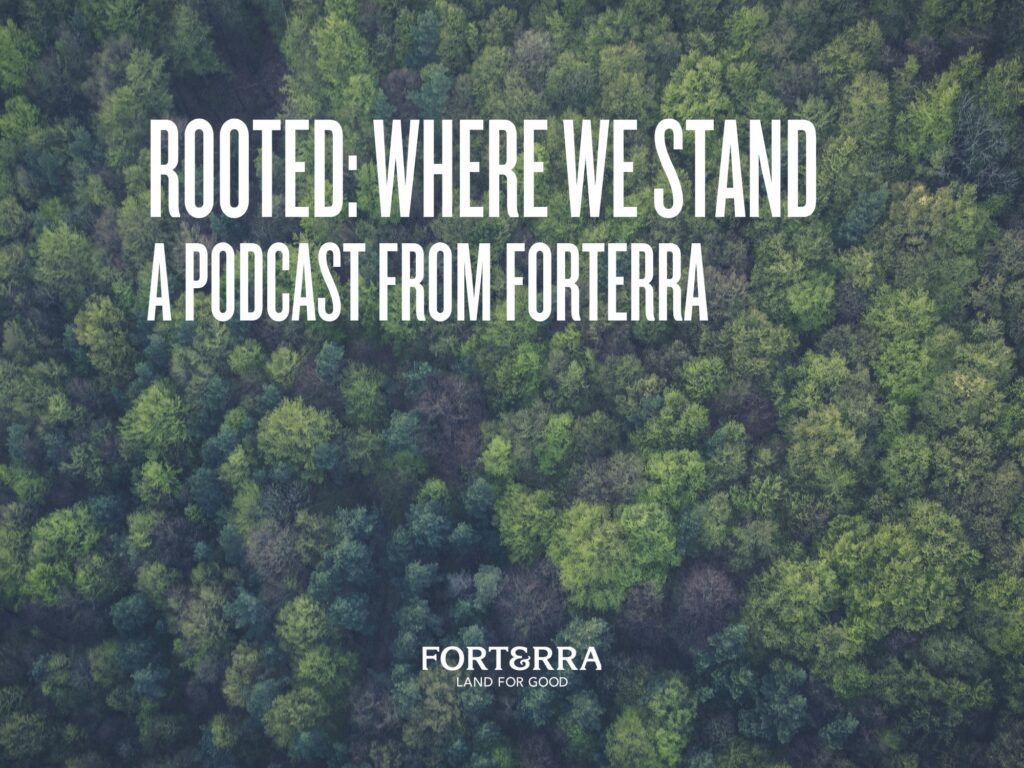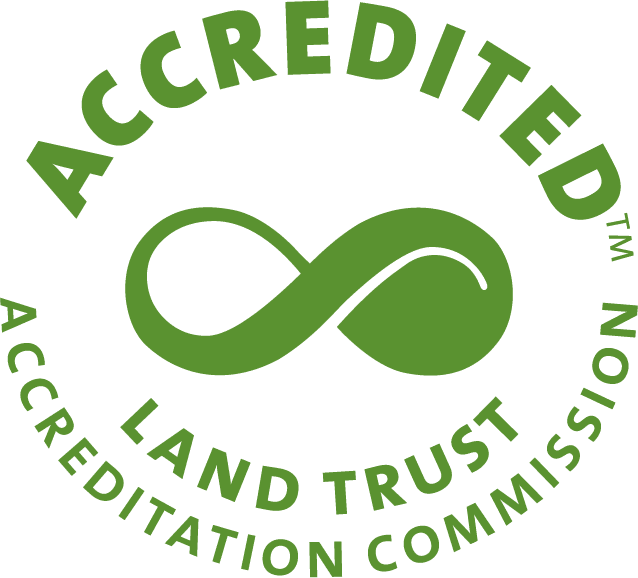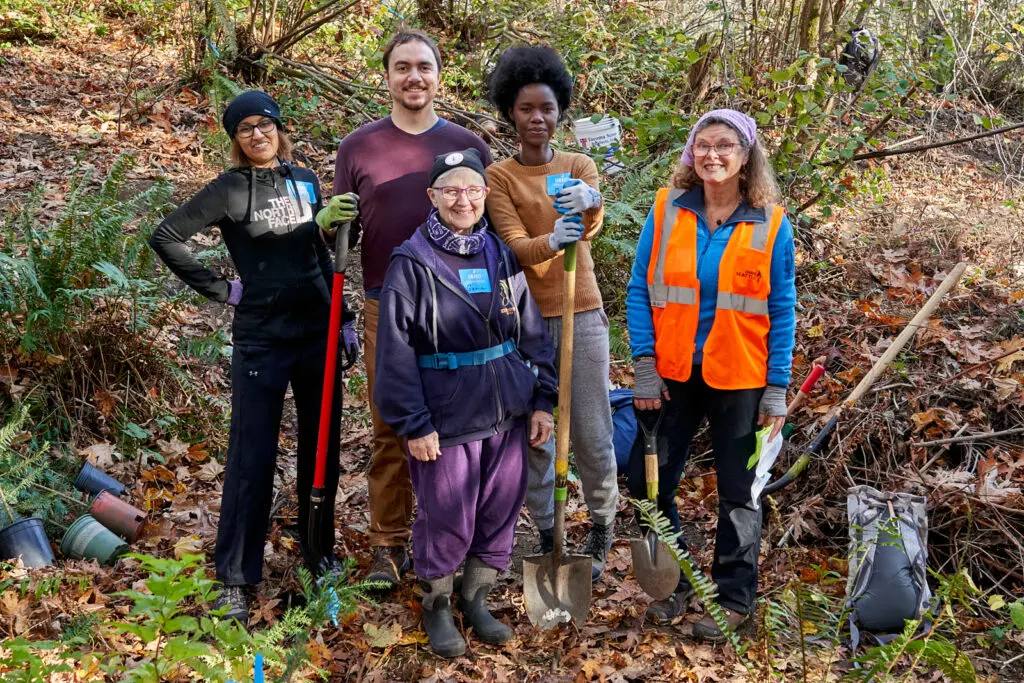
Take a ride on a research boat in the middle of Bellingham Bay and collect phytoplankton with badass scientist Rosa Hunter.
Rosa runs the lab at the Salish Sea Research Center. It’s part of the Northwest Indian College on the Lummi Indian Reservation in Washington state.
Rosa’s been told she’s not like other lab managers. Students aren’t used to seeing someone like Rosa lead a lab – Mexican and Native, covered in tattoos. Someone who dropped out of high school and spent time in prison.
But for Rosa, western science and Indigenous knowledge go hand in hand. She even had a realization that she comes from a long line of scientists, including her grandmother who would take her to go clamming on the beach.
Find out how the tiniest specks of life can teach us about climate change and why “Horton Hears A Who” is the best book ever, on this episode of Rooted: Where We Stand.
Find additional episodes here.
Sources
- Salish Sea Research Center
- Northwest Indian College
- Watch this video of Rosa in action
- An animated short about tardigrades
Additional scientific sources
- National Ocean Service: What are phytoplankton?
- MIT Climate Portal: Phytoplankton
- NOAA: Aquatic Food Webs
- The Revelator: Will Climate Change Threaten Earth’s Other ‘Lung’?
- NASA: Water Bears in Space
- American Scientist: Tardigrades
- SERC: Tardigrades (Water Bears)
Music in this episode
- Ghost Beatz: Beauty in the Struggle
- JCar: Innovation
- AlterEgo: Bounce
- PALA: Honolulu Beach Party
- Heartland Nights: Texas Tequila
Episode Transcript
[Music]
KN: It’s a perfect day. Sunny with a nice breeze. And I’m on a boat in the middle of Bellingham Bay in Bellingham, Washington.
RH: Uh we’re kinda rocking the boat like Aliyah–sings: “rock the boat, rock the boat.” Love Aliyah. Oh I wish I could do that dance right now she did on that video!
KN: And we’re not even on a party boat. We’re on a research boat. With Rosa Hunter.
RH: So I’m Native & Mexican, I look more Mexican, if you were just to meet me on the street you could clearly see I’m Mexican. I’m an old school Chola.
KN: Rosa’s tribes are Jamestown S’klallam and Nooksack. She is also one of the top researchers in the country when it comes to studying and identifying these microscopic eight-legged animals called tardigrades.
Rosa is the lab manager at the Salish Sea Research Center. Part of the Northwest Indian College. A tribal college at the Lummi Nation. Near Bellingham, WA.
There, she studies the health of the water and the life within it.
RH: So I know up here it’s the water. Because as a Coast Salish Native we rely heavily on, um, our marine food web. Ya know, the saying is, when the tide is out the table is set. And that holds strong and it’s true and it’s been true, ya know, since the beginning of time, since we’ve been here.
And you need to know this about Rosa: For someone whose life revolves around water, she is really scared of it.
[On the boat]
RH: Holy shit!
KN: What’s happening?
RH: Ahhhh!
KN: Some big ones.
RH: Hopefully your back is strong, because… (laughs).
KN: You’re listening to Rooted: Where We Stand. A podcast from Forterra. I’m your host, Kyle Norris.
Normally Rosa doesn’t even go out on the boat. But she made an exception for today. And not gonna lie, it’s choppy out here.
RH: You know the spirits are like–Rosa we’re gonna break this fear you have today. (laughs) We’re not gonna give you too much, to reinforce your fear but we’re gonna give you enough to get over it. Ohhhh the ancestors are…wow!
Thayne: That’s how they work, that’s how it works…(laughs)
KN: You just heard Thayne Yazzie. He’s our captain today. He’s Navajo/Dine. And is Rosa’s coworker at the Salish Sea Research Center. Where he does STEM education outreach.
Despite the choppy waters, Thayne’s calm in the captain’s chair. He navigates the boat toward a buoy in the middle of the bay.
But Rosa and I brace ourselves as we fly over bumpy waves. Rosa grips the railing, and I notice one of her tattoos that takes up her entire arm: It’s a woman scientist with nerdy glasses, big hair, and a magnifying glass.
The buoy we’re headed to has research equipment to test the wind direction and speed, to study the waves and record water temperatures.
Once we reach it, Rosa uses a big hook on a pole to attach the research boat to the buoy. It takes a few tries but then she nails it.
[Rosa sings]
RH: Ooo I got it!
TY: Alright good!
Which means now, it’s science time
[Fun music]
We’re on the hunt for phytoplankton – these microscopic, plant-like organisms in the water. Rosa calls them “plants of the ocean,” and she’s using a long net with super fine mesh to catch them.
There are billions and billions and billions of phytoplankton in our oceans. There’s more phytoplankton in our waters than there are stars in the sky! And get this–they’re responsible for producing more than 50-percent of the oxygen we breathe.
Since these little guys are at the bottom of the food chain, all roads lead back to phytoplankton. Even the stuff we put in our bodies – from seafood to fish oil pills – goes back to them.
So the health of those teeny tiny, microscopic phytoplankton is really important, and affects basically all ocean life, which in turn affects us.
That’s why Rosa’s studying the health of phytoplankton. And here’s what she’s seeing in her research: water temperatures are rising, and that’s causing phytoplankton to act super funky – and bloom when they’re not supposed to, for example.
Back on the boat, Thayne dunks a tube that looks like a giant French press to collect our last samples. Now, we’re ready to go back to the lab.
As the lab manager at the Salish Sea Research Center, Rosa works with students. And they help analyze the samples.
I talked with a few of them. They all told me, they’ve never had an instructor like Rosa.
[Music]
For starters, she’s covered in tattoos. On her chest, neck, arms & knuckles.
Sandra: I almost wanna say she’d be like one of my cool aunties. Like she’s somebody you can talk to, you can go to, you can trust.
That’s Sandra James. Who says she talks to Rosa about science, personal things or struggles in school–like dealing with a tough teacher.
Student Jackelyn Garcia says Rosa has a vibe that her other professors don’t.
JG: Yeah so Rosa really is…real wit chu. Like she is just so her and really unapologetic about who she is. She’s also just so open to talking to you about science but also identity and just how to navigate the space as a person of color and what that can entail…and she has so much wisdom from a lot of her past experiences, and she really helps you feel empowered to be yourself as well, just as you are.
KN: Jackelyn says Rosa explains lab techniques in normal language. And Rosa doesn’t use complicated jargon which Jackelyn she says can make you feel stupid.
Rosa is intentionally creating this atmosphere of fun and supportive learning.
[Music fades out]
These students are having a very different experience than the one Rosa had in college.
Here’s what she remembers from her college experience.
RH: Worked worked worked. Uh, cried every quarter, thinking I was, I’m stupid. I have imposter syndrome. And now I run a lab and everyone in it.
KN: Rosa’s journey to becoming a scientist was never on her radar for the first 30 years of her life.
Rosa grew up in Seattle and Northern California with her single mom and brothers. While her mom worked blue collar jobs, Rosa took care of her younger brothers, which she hated. They moved around a lot.
RH: Got in trouble in my youth, uh because everyone else in my family were, alcoholics or drug users or whatever, and that was just the environment I was in outside of my family it was also within my community, everyone used & abused. Then uh, got in trouble, I’m surprised I’m still alive. Eventually ended up in prison. Came out, worked some bullshit jobs.
KN: She bartended, cleaned-up construction sites and worked as a short order cook at a bowling alley.
As a teen, Rosa had dropped out of school in the 10th grade. So she didn’t have the background of using computers to do your work, for example. Eventually she enrolled in college.
Rosa’s strategy was to take the easy classes first. But then she had to fulfill a science requirement. And until this point in her life, Rosa says the word “science” had never even entered her vocabulary.
She scanned the list of classes and something called “watershed ecology” caught her eye.
RH: And I’m like what the hell is a watershed? I don’t know what ecology is. So I was avoiding all those classes. And then I seen that there was an intro to plants class, and I was like, I like plants. Um yeah so we’re gonna name plants.
So she took it.
RH: We were identifying bryophytes–so mosses, and they were so hard. They were hard. I had no clue what I was doing.
KN: This was the first time Rosa ever used a microscope.
RH: I’m identifying these plants, these bryophytes, and then I was like wait! There’s stuff swimming here, in my petri dish. It just blew my mind that there was stuff that small alive. How can stuff be designed so well and so perfect and you can’t see it with the naked eye?!
KN: And Rosa, really got into it.
She had gone from crying every quarter and thinking she was stupid. To realizing she has an extraordinary talent when it comes to identifying things under the microscope.
Here’s her boss, Dr. Misty Peacock.
MP: It takes a special kind of person who can sit in front of a microscope and look at tiny, tiny little things in the water, it’s really taxing, um, people get seasick staring at a microscope like that. And Rosa’s really good at it.
KN: Rosa says her “first loves” were tardigrades. They are these microscopic yet super tough creatures that can survive the most extreme environments. They go by the nicknames “water bear” and “moss piglet” – go look up a picture right now because they’re cute. They look like gummy bears come to life.
Even though they’re teeny tiny – again, you need a microscope to see them – they’re among the toughest lifeforms that we know of. NASA even took them to space.
Scientists, like Rosa and freaking NASA, study tardigrades because they can teach us about how to survive in harsh environments, something that is becoming more and more relevant due to climate change.
And Rosa is so talented at identifying different kinds of tardigrades that scientists around the country reach out to her for help and guidance.
[Music]
In Rosa’s journey of becoming a scientist, she realized her family members were scientists. Like her grandmother, Jean Hunter.
Jean died when Rosa was 15. But she is very alive and important to Rosa.
[Music]
Rosa remembers her grandmother’s beautiful singing voice and love for Patsy Cline. Rosa says she was full of love; when she hugged you, she would engulf your whole body.
When Rosa was a kid, her grandmother Jean would take Rosa to the beach to go clamming. At the time, her grandma’s behavior seemed strange.
RH: I didn’t know, I just thought she was weird and crazy I guess. Uh. She would like look around, she’d just look around–it wasn’t even for a minute, it was like for 5 minutes, 10 minutes. She would just look anywhere from the sky all the way to the ground. As far as she could look left and as far as she could look right. And then she would say, we’re either digging here or not.
KN: Now after years of research, she understands what her grandmother was doing.
RH: She was doing environmental scans, like, it’s how she was taught to do it, and then they were taught to do it. And they were taught before & before. Ya know, like. That is mind blowing. That’s science right there. You’re observing, you’re looking at your environment, ya know, that’s ecology right there, that’s biology right there, ya know that’s even chemistry right there.
KN: Rosa says all that, is traditional ecological knowledge.
As a researcher, things have come full circle for Rosa. For example, as a kid she remembers being taught that during low tide, you do not pick the clams that are easy to reach.
RH: Right like the little necks or manilla clams or butter clams that are just sitting on surface. They’re considered to be sick. So you leave those ones alone. Like you need to dig for your food. You need to put in the work for your food.
KN: Her grandmother didn’t explain why. That’s just what they did.
But in her work as a researcher, she’s figured out why. In her studies, they sample the clams that are buried in the sand and the clams on the surface.
RH: And we’re like, oh these ones have way more toxins in them. I’m like, oh wait a minute, so they’re on to something! Like I didn’t know I came from a line of scientists, ecologists and stuff. I just know, hey, we don’t pick these ones up.
KN: She says that just because someone doesn’t have a PhD doesn’t mean they don’t have deep knowledge of a place and an ecosystem. And that there’s all kinds of ways of knowing and knowledge.
Rosa says, it’s important to bring all of our expertise to the table can be especially important to figure out ways to tackle issues like climate change.
Talking to Rosa, she mentions her favorite book several times: “Horton Hears A Who” by Dr. Seuss. It’s about an elephant that cares for a community of tiny creatures that no one else can see.
Rosa says it’s a book everyone should read. I didn’t really get the significance at first. But now, I realize, this is part of her philosophy.
RH: And we need to protect our marine waters & our fresh waters. Because we see the environment has changed and it is continuing to change and I know climate change, that word is kind of taboo right now, not everyone believes in it. But I mean it’s here and happening regardless if you believe it or not. And as a scientist I see it. And I see the numbers, the data. Everything changing, everything shifting. It’s a domino effect. Everything’s connected.
KN: That takeaway of Horton Hears A Who – just because you can’t see something doesn’t mean it’s not real? Rosa relates to that as a scientist and an Indigenous person.
RH: I know from what my family has said, and has, ya know, everything’s connected. You respect what the earth is offering you. You respect what mother nature is given you, you know don’t take it for granted. You give thanks. Even in research, every week I look at phytoplankton, yes it’s a single cell plant, until they form a chain and they are multicellular. But, they are still living. They give us oxygen. Why would I not say thank you to them for like doing what they’re doing?
KN: So she does, in her own ways.
Like sometimes when she needs to take an image of an especially squirmy plankton. She prays to the plankton gods and says:
RH: Bless the petri dish, ya know, make it go night night! (laughs)
KN: So that it will stay still enough for her to snap the image. Rosa says, that usually works.
Science and traditional knowledge point Rosa in the same direction: That just because you can’t see something, doesn’t mean it’s not real. And even the smallest speck is still filled with life – life that matters, life that we’re connected to.
Thanks for listening to Rooted: Where We Stand.
Rooted’s host and executive producer is me, Kyle Norris. Our editor is Mary Heisey.
You can find the sources we used in our research on this episode in the show notes.
“Rooted” was created by Forterra. A land trust that envisions people and nature thriving together in a place where everyone belongs. Forterra wants you to know there’s a strong relationship between our forests and the health of our water. A healthy forest helps store, filter and clean water that flows through it. So, the next time you are swimming in nature, or fishing, or even drinking clean water- remember the important role that healthy forests play in the quality of that water.
You can find more at forterra.org.






